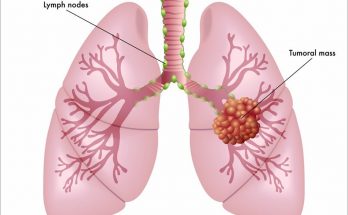Pulmonary rehabilitation is an exercise program for people with chronic lung disease such as chronic bronchitis, emphysema, asthma, bronchiectasis and interstitial lung disease.
How does Pulmonary Rehabilitation Work?
Pulmonary rehabilitation programs usually entail education and emotional support, exercises for endurance, strength and lung training to increase a persons lung capacity and decrease one’s dependence on supplemental oxygen. The goal of a pulmonary rehabilitation is to increase a person’s quality of life, restore a person’s lung function or restore it to the highest possible level for that person.
Goals of Pulmonary Rehabilitation
- Improve physical condition
- Improv tolerance to exercise
- Decrease symptoms and complications
- Reduce the number of exacerbation
- Increase a self-esteem
- Decrease hospitalizations
- Helps a person gain control of there daily lives by encouraging self-management of there condition
Who Teaches a Pulmonary Rehabilitation Program?
A Pulmonary rehabilitation program should consist of a medical director (physician), Registered Respiratory Therapists, specially trained nurses and rehabilitation therapists. Some will also include a dietician, psychologist and support staff. The multidisciplinary staff work together to evaluate a patients overall physical and emotional state, and to develop an individualized plan for that patient.
Exercise
Exercise is a key part of a pulmonary rehabilitation program. These physical activities will improve your heart and lung function, it will also improve your lung muscle strength, allowing you to breathe easier and more effectively. People with chronic lung disease may limit their physical activities because the may be afraid of becoming short of breath. When you become inactive your muscles become weaker making it harder to breathe.
Pulmonary rehabilitation allows you to peruse activities that you would normally not have tried, it will also allow you to become physically fit and help you gain control of your breathing. Getting physically fit can occur in a group or individual. And even if you cannot attend a formal program there are programs to help you exercise at home. Some of the exercised may include walking, running, peddling on a stationary bike, arm cycling and sit-ups. Breathing exercises are a very important part of building your lung muscles, which will allow you to increase your lung function. Data and studies are starting to show that for people with COPD benefit greatly from strengthening their inspiratory breathing muscles as well as their expiratory breathing muscles. Most people who exercise will feel better physically and mentally.
Education
Educational activities are an important part of a successful pulmonary rehabilitation program for both the patient and the family. These activities may include books, videos and lectures in a classroom.
How to deal with lung disease
Many emotions may occur when a person has a lung disease including anxiety depression, anger and frustration. These can interfere with a person’s daily function and can increase shortness of breath. Psychological counselling can help you and your family cope with a chronic disease. Classes in stress management, relaxation techniques will help. Some programs even offer self-help groups. Nutrition
People with chronic lung disease often have poor eating habits due to shortness of breath and feeling of being tired all the time this will interfere with your ability to eat a nutritional meal. The type of foods you eat can increase shortness of breath. Also, the time you eat can have an effect on you. A dietitian can provide counselling on the types of foods that are good for you and when and how often and you should eat. A pulmonary rehabilitation program should teach you food preparation, types of food to eat and suggest vitamins and supplements for you.
Choosing a pulmonary rehabilitation program
There are many types of programs in the United States, varying in the length, differences and scheduling and differences in the components of the programs. They also vary in cost and the types of healthcare professionals involved.
